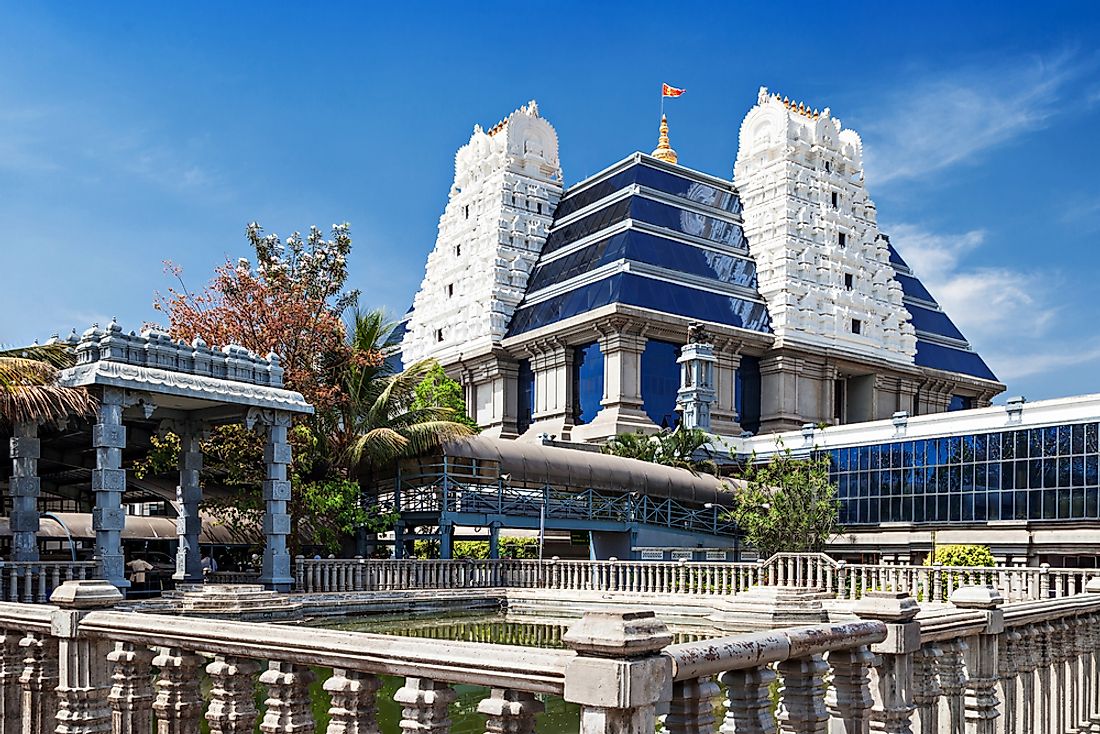What Does Hare Krishna Mean?

What Does Hare Krishna Mean?
The Vaishnavism Hindu mantra came from Sanskrit names for the Supreme Being and took on new meanings in the modern Western world. Over the years, the Hindu devotion to the maha-mantra had electrified and intensified the use of the incantation to the extent of spreading the chants all over the world. The Vaishnavism teachings embodied in the Hare Krishna Rama Mantra is the focal point of Hinduism. Over the ages, the maha-mantra is prescribed as the purest, most assured, and easiest way to propel past life as one seeks his or her way in life. Chaitanya Mahaprabhu is the most known ancient proponent of the maha-mantra while A.C Bhaktivedanta Swami Prabhupada is modern age Proponent who spreads the good news of Vaishnava teaching, and Bhakti yoga.
Origins of the Words Hare, Krishna, and Rama
Hare is the energy of God while Krishna is God himself. Rama and Krishna appear as names of Vishnu in the sahasranama and refer to the 7th and 8th Avatars of Vishnu. Hare Krishna thus means a worshipper of Krishna. Rama, on the other hand, relates to Radha-Raman meaning beloved of Radha which is a shortened form of Balarama, Krishna’s first expansion. Ram, the incarnation of Vishnu, comes from the famous story Ramayana, a popular mythology among the Hindu. The word Hare originates from Haran which is a little prayer to God requesting for supremacy over sin and sorrow. Krishna a Vishnu incarnation appears widely in the Mahabharata, a famous epic in India which depicted Krishna as the most popular God in Hinduism. The three words Hare, Krishna, and Rama are the supernatural seeds of maha-mantra.
Chaitanya Mahaprabhu, Vaishnava Teachings, and Bhakti Yoga
Chaitanya Mahaprabhu, the founder of Gaudiya Vaishnavism, is considered by his devotees as the most merciful manifestation of the Supreme Being Krishna, who came to teach people the process of Bhakti and means of attaining the perfections of life. The Bhakti yoga which means a loving devotion to God is a Vaishnava school founded under the teachings of Chaitanya as written in the Bhagavata Purana and Bhagavad Gita. Vaishnava teachings are theism with many varieties. The instructions are based on the devotion of Vishnu and his avatars (incarnations). Vishnu incarnates many times and in different forms so as to set things right and bring the universe to balance. The avatars include Rama, Krishna, Narayana, and Vasudeva; where each name refers to divine supreme beings. Rama is the feminine form of God and Krishna is the masculine aspect. In the teachings, Radha is the Supreme Goddess that enchants Krishna hence the incarnation “Radha Krishna.” Narayana is the belief in one Supreme God.
The 16-word Maha-mantra
The Hare Krishna mantra is a 16 word Vaishnava mantra mentioned in the Kali-Santarana Upanishad which rose to prominence from the 15th century Bhakti movement- which followed the teachings of Chaitanya Mahaprabhu. The mantra has 3 Sanskrit Supreme names; Hare, Krishna, and Rama. These singular vocatives are found in the Sapphic Stanza of anustubh meter. The first appearance of the vocatives is in the Kali Santarana Upanishad, kalisaṇṭāraṇopaniṣad which is a Vaishnava Upanishad associated with Krishna Yajurveda. In the Upanishad, Narada asks Brahma the name of Narayana to which Brahma replies
“Hare Krishna Hare Krishna
Krishna Krishna Hare Hare
Hare Rama Hara Rama
Rama Rama Hare Hare.”
Significance to Hindus through History
To the Hindu, the mantra is synonymous with Prayer. The religious incantation or chant is a form of communication with gods when seeking favor or material wealth from them. The Hindus performed elaborate rituals, chanting mantras to please their Supreme Being and request the assistance when fulfilling individual desires or realizing and identifying one's purpose in life. The mantra was a devotion to God and the contemplations of Krishna. Throughout history, Hinduism has had a very ancient and continuing tradition belief in mantras. The mantra is the heart and soul of Hindu ritual tradition. To the Hindus, mantra chases bad karma and makes things auspicious and pure. To Hinduism, mantras solemnize and ratify rituals; it is their identity.
Western and Pop Culture Uses
The yoga devotion is perhaps the biggest use of mantra in pop culture today. Using mantras for meditation gives the brain something to do. Spiritual mantras are believed to transform the chanter into a peaceful coexistence with nature. To yoga lovers, the peace brought about by the unresponsive silence exerts onto the believer a pure state of mind.
Claimed Benefits of Reciting the Mantra
Reciting the mantra is believed to transform the user to a peaceful coexistence with nature. Yoga exercises are a form of therapy recommended by many doctors around the world especially as a means to ease the pressure, relax, unwind, rewind, and freshen up the mind. Scientists also believe that yoga is useful in controlling weight gain and high blood pressure.
The Vaishnava Voice
The ISKCON (International Society for Krishna Consciousness) movement is a group founded by Abhay Charanaravinda Bhaktivedanta Swami Prabhupada in 1966. This movement spreads Vaishnavism all the way from India to many places around the world. Today, people in North America, Europe, South America, Russia, and Africa understand and practice the teachings of Vaishnava.
What Does Hare Krishna Mean?
| Hare Krishna Mantra | 15th Century Hindu Vaishnava and Bhakti Yogic Teachings |
|---|---|
| Hare kṛiṣhṇa hare kṛṣṇa Kṛiṣhṇa kṛiṣhṇa hare hare Hare rāma hare rāma Rāma rāma hare hare | Best Known Early Proponent: Chaitanya Mahaprabhu Best Known Modern Proponent: Abhay Charanaravinda Bhaktivedanta Swami Prabhupada |







